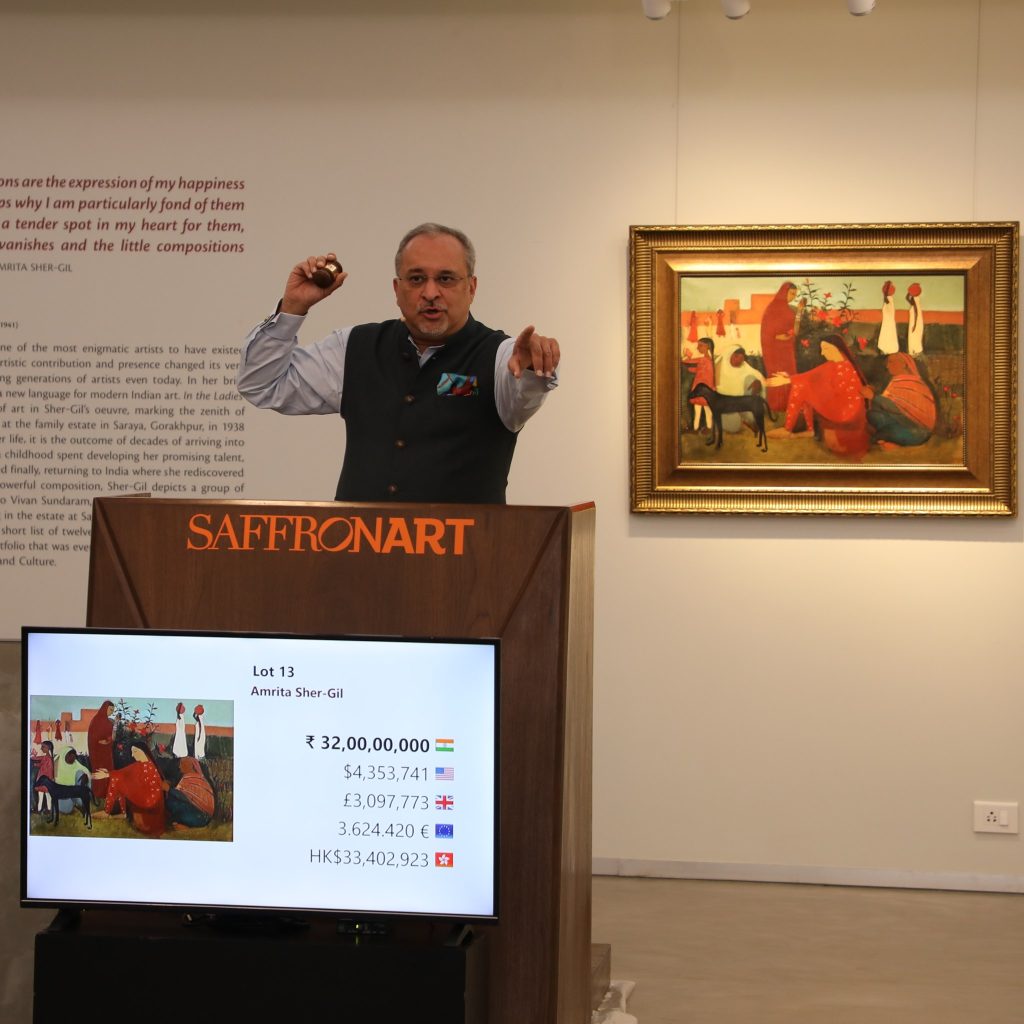Introduction
In the world of Indian art, few names shine as brightly as Amrita Sher-Gil’s. The upcoming Saffronart September Sale, set to take place on September 16, 2023, in Delhi, is generating considerable buzz. Among the 78 works to be auctioned, the coveted cover spot belongs to Amrita Sher-Gil’s masterpiece, “The Story Teller,” painted in 1937. This iconic artwork captures the essence of vintage India, with a scene featuring cows and women draped in odhinis gathered in a rustic courtyard, exuding the rhythms of rural life.
Amrita Sher-Gil: A Pioneer Without Bounds
Amrita Sher-Gil’s legacy transcends schools and styles of painting. Her unique journey, influenced by her experiences in Hungary, Paris, and India, carved a revolutionary path that combined modernism with quintessential Indian themes. According to her nephew, Vivan Sundaram, Amrita Sher-Gil’s treatment of female subjects was not merely distinctive; it revealed the silent struggles, loneliness, and resilience of these women in their humble lifestyles.
A Life Between Worlds
Amrita Sher-Gil’s life was marked by its multiculturalism and her deep connection with India. Despite her untimely death at the age of 28, she left an indelible mark on the art world. She masterfully used the vibrant colors reminiscent of Indian miniature paintings to depict everyday Indian life. In “The Story Teller,” five women, a boy, three cows, and a dog under a charpoy (cot) create a captivating scene. This artwork reflects Sher-Gil’s expansive thoughts and vision for modern Indian art, melding nostalgia with innovation.
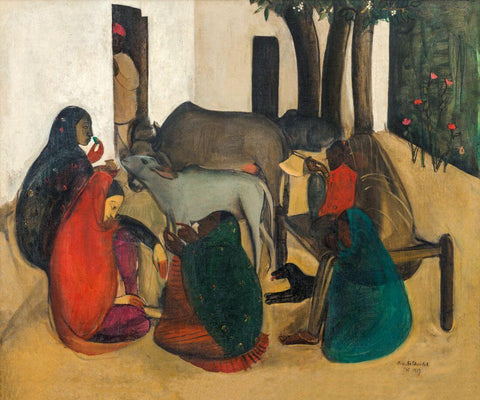
Sher-Gil’s Enduring Influence
Amrita Sher-Gil played a pivotal role in shaping 20th-century Indian art and continues to influence generations of Indian artists. Her work speaks volumes without the need for words, a testament to her ability to tell stories through her art.
M.F. Husain’s “Family, 1961”
At lot 22 of the upcoming auction, we encounter M.F. Husain’s “Family, 1961.” Husain, known for his celebration of love, art, and human experiences, painted a diverse range of subjects, including musicians, dancers, horses, bathers, nudes, and lovers. In “Family, 1961,” the dominant figure of a mother cradling a child draws viewers into a world of emotion and introspection
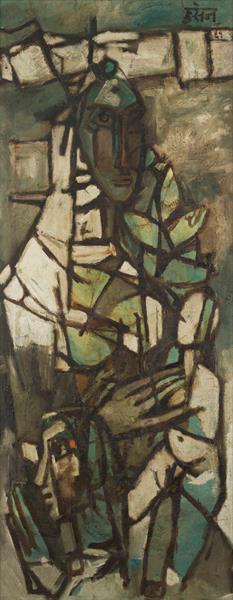
Husain’s portrayal of the feminine form, influenced by classical Indian sculpture and his love for Picasso, is characterised by angular lines and social nuances. His women are both enigmatic and accessible, shrouded in a veil of simplicity that only enhances their allure.
Ram Kumar’s “Kashmir”
Lot 55 presents a rare abstract treat by Ram Kumar, a master of balance and precision. His work, inspired by his visit to Kashmir in the mid-1960s, showcases a softer palette compared to his earlier, grey-toned pieces. This landscape masterpiece transforms the natural beauty of Kashmir into a series of lines, planes, and blocks. Kumar’s skilled command over colour and texture reveals his inner spirit in every stroke.
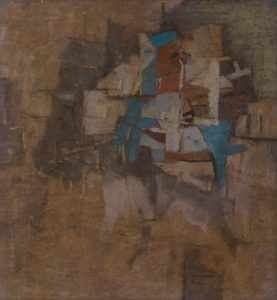
Krishen Khanna’s “Rearview, 1994”
At Lot 51, we find Krishen Khanna’s “Rearview, 1994,” part of his truck wallah series. Khanna’s work delves into urban dualities and the struggles of life in Delhi. His depiction of rural migrant laborers, covered in dust and obscured by grime, speaks to the challenges faced by those seeking a better life in the city. “Rearview” portrays the poignant reality of these subaltern figures in a monochromatic palette, highlighting their alienation and rootlessness.

F.N. Souza’s “Caribbean Palm 1968”
Founder of the Progressive Art Group, F.N. Souza’s “Caribbean Palm 1968” graces Lot 67. Painted after Souza’s move from London to New York, this artwork reflects his travels to California and the Bahamas. The palm trees take center stage, showcasing his expressionist style and vibrant colour palette. The simplicity of the buildings in the background contrasts with the complexity of the geometric blocks, creating a harmonious blend of Latin American influences and Souza’s unique vision.

Shyamal Dutta Ray’s “Untitled, 1995”
Shyamal Dutta Ray’s paintings are deeply personal and reflect his observations of life in Kolkata. His watercolors are a testament to his technical mastery, portraying the city’s contradictions, including sorrow, struggle, strife, poverty, and hope. “Untitled, 1995” captures a surreal and ironic scene of a bony horse in a twilight street view, offering a poignant commentary on urban life.
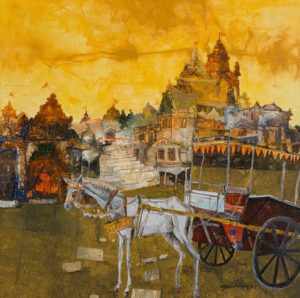
The Saffronart September Sale promises to be a treasure trove of art, featuring masterpieces by renowned artists that span a wide range of styles and themes. Each artwork tells a unique story, providing art enthusiasts and collectors with a rich tapestry of Indian art history to explore and appreciate.
Source:TOI
Feature Image Courtesy: Saffronart via instagram
Why Amrita Sher Gil refused to draw the portrait of Jawahar Lal Nehru?

Contributor

